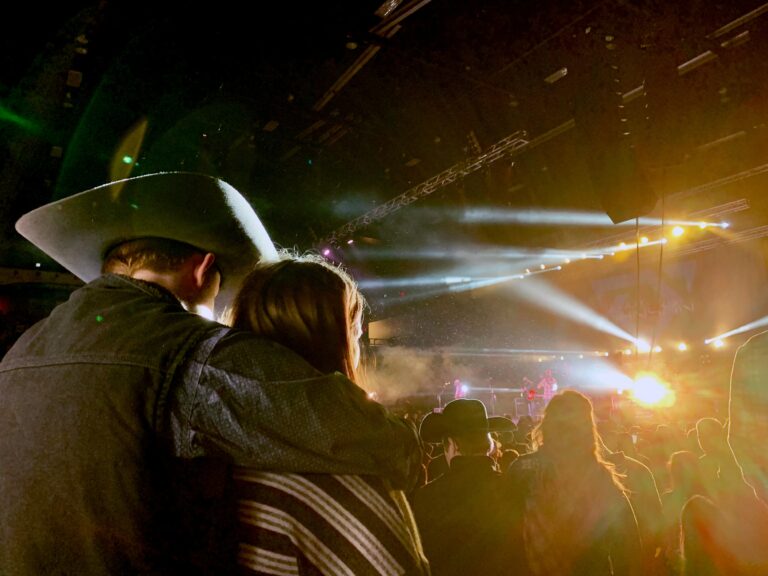How to Keep Rhythm Without a Drummer
Guitarists, vocalists, saxophone players, and everyone else needs rhythm to play well. Of course, having a drummer friend to accompany you helps, but there will be many times when this isn’t possible.
How can you keep rhythm without a drummer? There are many easy alternatives to having a drummer on hand that enable you to maintain a steady rhythm. Tapping your foot, using a metronome, and playing along with a recording are some of the most common methods.
But if rhythm was easy, there wouldn’t be so many people who struggle with it. Read on to learn how you can build an enviable sense of rhythm. Trust us — it’ll elevate your playing to new heights.
Why Keeping Rhythm is Important
Many folks shy away from worrying about rhythm. This is understandable behavior for musicians, as we hate being boxed in by rules and limitations. However, not taking rhythm into account creates problems.
When playing with others, an established beat and tempo keep everyone on the same page. In addition, understanding rhythm ensures that no player speeds ahead or drags along during performances. So while you may be able to get away without rhythmic consistency when you play solo, it becomes a problem when others try to follow you.
Maintaining rhythm also prevents you from playing beyond your skill level. For example, you may yearn to play a speedy sax solo before understanding the song’s underlying chord changes. Plus, you won’t be able to keep up if you don’t jump in at the right time — a recipe for disaster.
The solution to all these problems is to keep good rhythm. If you struggle with that, practice one of the methods discussed below.
Best Methods to Stay on Beat Without a Drummer
Let’s face it — it’s not always convenient to use a drummer whenever you need a beat. In addition, drummers are loud, offer differing skill levels, and frequently require alcohol.
Furthermore, drummers aren’t always going to be available when you want to get in a short practice session before work. Fortunately, there are far more reliable means of keeping a beat. None of the methods we discuss require anything (or anyone) other than yourself and a few tools.
Tapping Your Foot
Humans have been tapping their feet long before the first drumkit. Unlike most species, rhythm is in our DNA.
Still, rhythm is challenging without some type of feedback. Tapping your foot allows you to feel the rhythm and is therefore superior to an imaginary drumbeat. It’s also less distracting going “one and two and three and four” in your head instead of focusing that mental energy on playing.
However, tapping your foot isn’t the most accurate timekeeping strategy. If you have nothing else to guide you, such as a recording, chances are high that you’ll slowly shift tempo as you play. Nevertheless, it works in a pinch and will benefit your musical skill.
Using a Metronome
A classic method is using a metronome. If you’re unfamiliar with a metronome, think of it as a stick of time. The stick sways back and forth at whatever tempo you set and clicks each time. The goal is to play in time with the clicks.
Metronomes are cheap. You can grab a reliable one for about $20 on Amazon. They can be analog or digital. Additionally, you can find a free metronome online if you don’t want to bother with something physical.
Naturally, a metronome is more reliable than your foot. Plus, you can adjust them for different time signatures — such as 3/4 or 4/4 — to accent every second, third, fourth, fifth, or sixth note.
The drawback of many metronomes, especially analog models, is that you cannot change the volume. So if you play a quieter instrument, the clicks and dings may be overpowering. But if you play the bagpipes, for example, the metronome may be unable to keep up.
Listening to a Backing Track
Backing tracks are fun. There are myriad tracks, especially for guitarists, available on YouTube. Look up “backing track in (desired key)” and examine your options.
This is a great option for those who’d like to practice soloing. Plus, many backing tracks show you what a diagram of chord changes to make it ridiculously easy to play along.
Furthermore, backing tracks are the most colorful option for keeping rhythm. They usually contain drumbeats, basslines, and other background instruments for a complete musical experience. However, backing tracks lack one important piece: you.
Using a Virtual Drummer
If you use a digital audio workstation software (DAW), chances are you have access to a virtual drummer. But what do we mean by virtual drummer?
Generally, a virtual drummer could consist of pre-recorded beats and some algorithms. However, this term can also refer to any software-based drumming tool.
If you don’t want to get bogged down with music production software, check out the Apple App Store or Google Play for easy-to-use automated drumming. Also, iPhone users have something perfect for this preinstalled: GarageBand.
You set a few basic parameters with a virtual drummer and let the software handle the rest. A significant advantage of keeping rhythm with a virtual drummer is that you can design your own beat without knowing how to play drums.
Recording Your Own Drumbeat
Perhaps you’re a drummer. Unfortunately, as phenomenal of a musician as you are, you can’t play two instruments at once — at least not when one of those instruments is a drumkit.
Fortunately, you don’t have play them at once. Instead, recording your own drumbeat and playing alongside it is a great way to seize total control of your jam sessions.
It doesn’t need to stop with the drums, either. Multi-instrumentalists can take advantage of DAW software to record several takes of several different instruments. For example, you can easily layer a bassline over a drumbeat — and perhaps throw in a French horn if that’s how you roll.
At this point, however, you’re literally composing a song. While this is great, it’s a tad complex if you just need a beat.
How to Improve Your Sense of Rhythm
You can improve your sense of rhythm by practicing what we discussed. The important part is exercising at least one of these methods every time you practice. Eventually, you’ll play at an appropriate and steady tempo without thinking about it.
You might not like one (or a few) of the methods — that’s okay. Perhaps you’re not a metronome type of dude or girl. Maybe you’d prefer to tap your foot. Someone else might rather practice with a backing track.
Choose at least one of the methods and go from there. You know you’re making progress when chord changes come naturally. Then, once you nail down rhythm, you can pivot to more exciting things like building speed.
Don’t let your ego get ahead of you. Everyone starts slow. Accuracy and consistency beat everything else and are the bricks on which speed and showmanship rely.
FAQ
How do I keep rhythm on guitar while singing?
Playing guitar while singing is a classic skill that singer-songwriters must master. But if you haven’t tried it yet, it’s harder than it sounds.
The truth goes for every instrument, but guitars are a prime example. When you try to coordinate the timing of two separate melodies, your fingers and voice will wage war on one another.
“Difficult” and “impossible” aren’t interchangeable, though. To sing and play, you need to start slow and master the lyrics and the guitar part of the song independently before you combine them.
Fortunately, enough repetition will enable your muscle memory to kick in. Once this happens, you’re less likely to make mistakes when you start singing.
So go slowly. It’s vague advice, but it works.
How do I keep perfect rhythm with the song?
One of the most gratifying parts of learning an instrument is being able to play along with your favorite songs. Nevertheless, being able to keep up with skilled musicians in recordings is challenging.
Fortunately, you don’t need to make do without a beat. Most all modern songs have a beat. To keep perfect rhythm, listen to the music with headphones and focus on the percussion.
Repetition helps. Listen to the song several times before you pick up your instrument. Once you can confidently tap your foot in sync with the beat, bring out your instrument and start practicing for real.
Start slowly. It’s okay to pause and replay a song several times to perfect your technique. A tool like Songsterr Plus even allows you to slow down songs and isolate individual elements. It’s a great learning tool that’ll quickly elevate your playing for a small monthly fee.
Conclusion
Fortunately, there are numerous strategies to keeping rhythm without the help of a drummer. However, each comes with advantages and drawbacks — much like real drummers.
We’ve gone over a few of the most popular strategies, but not all of them. Ultimately, it’s critical that you choose whichever method makes practice enjoyable in addition to helping you stay on beat.
The good news is that there are many ways to keep time. Metronomes, YouTube backing tracks, and good old foot taps will take you a long way. Most importantly, you’ll come out with a better sense of rhythm. Better rhythm makes a more versatile (and recruitable) instrumentalist.








